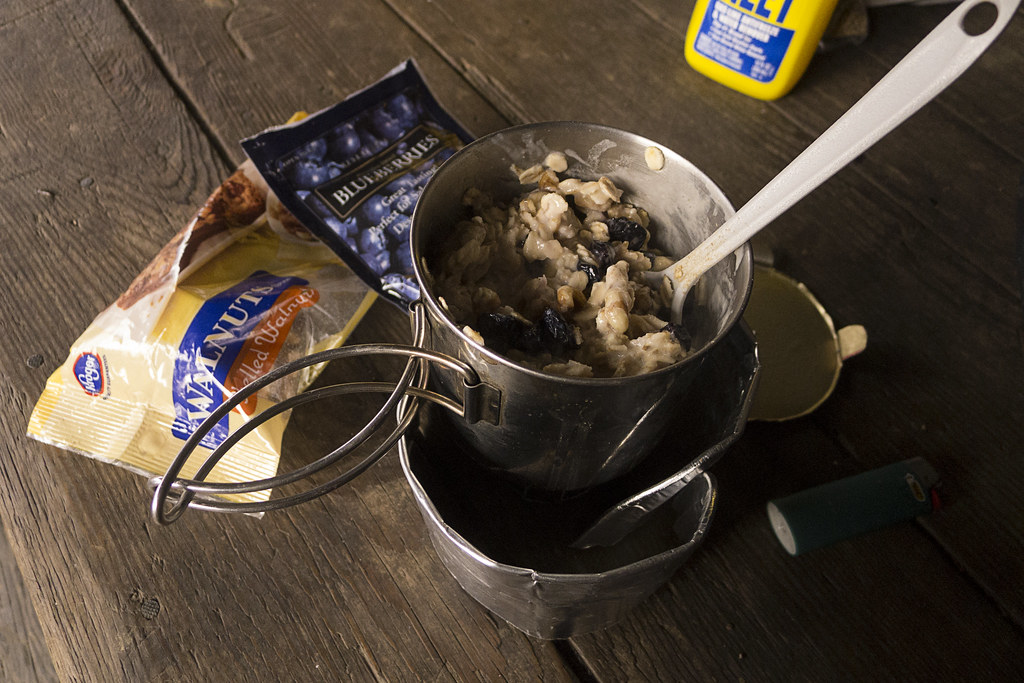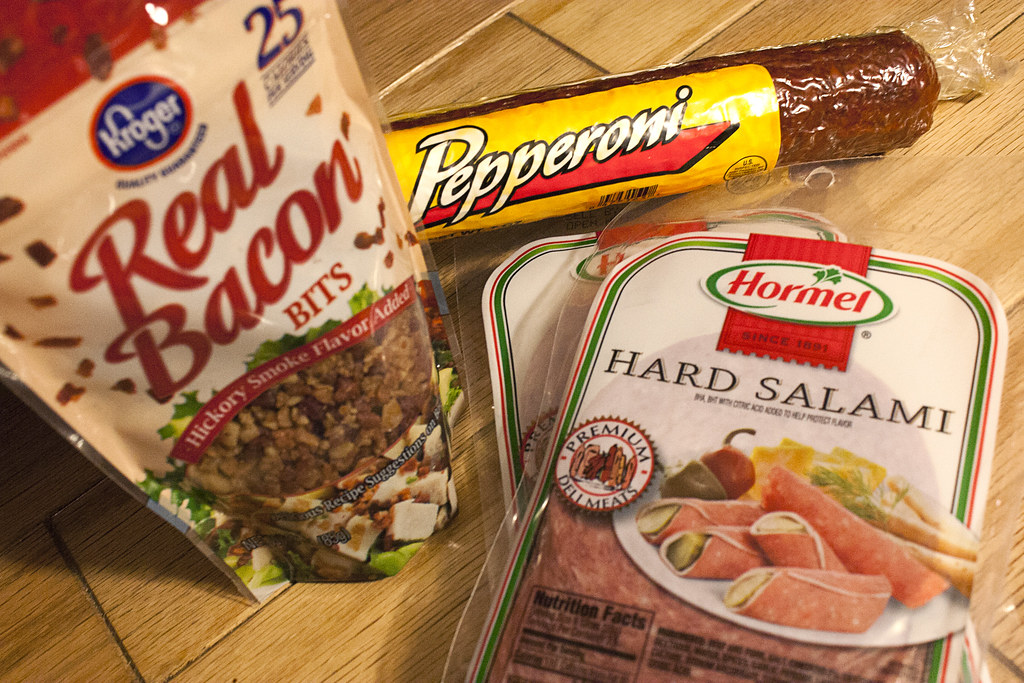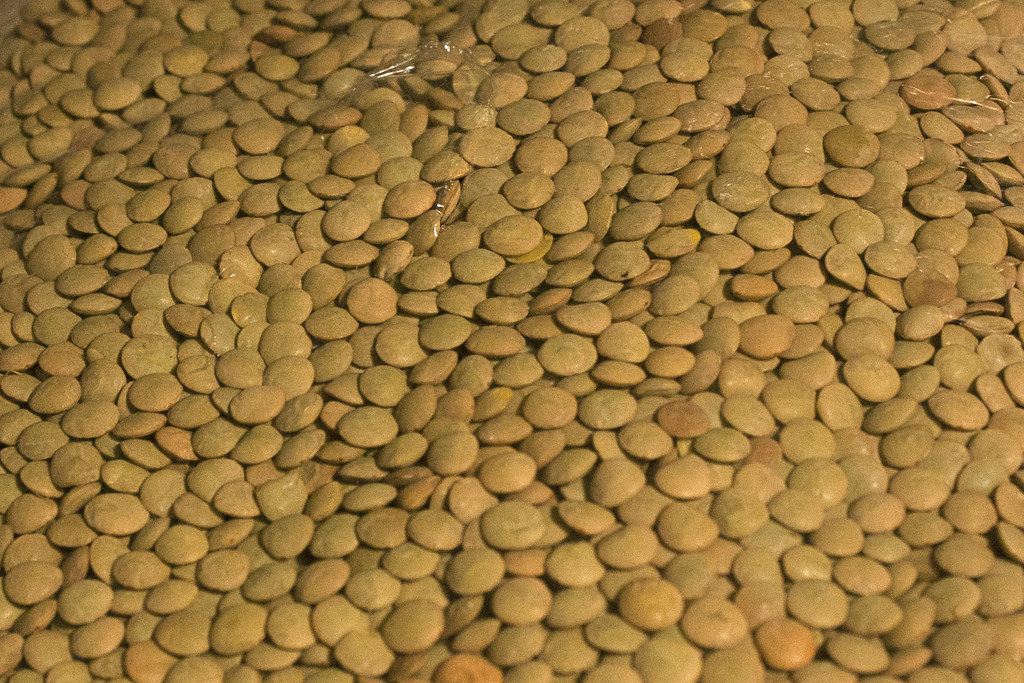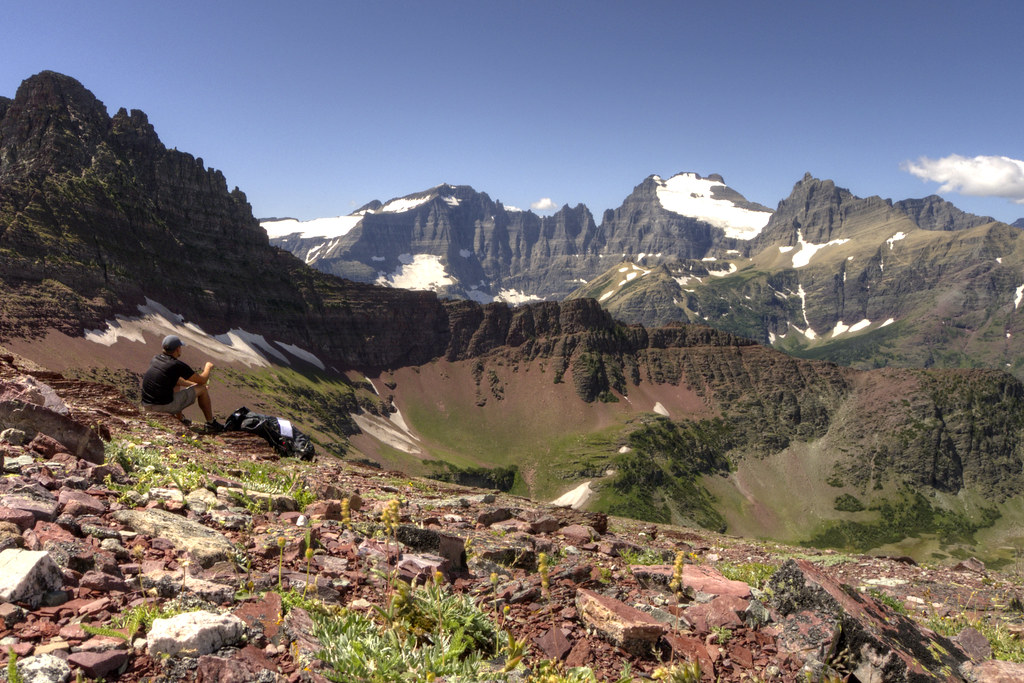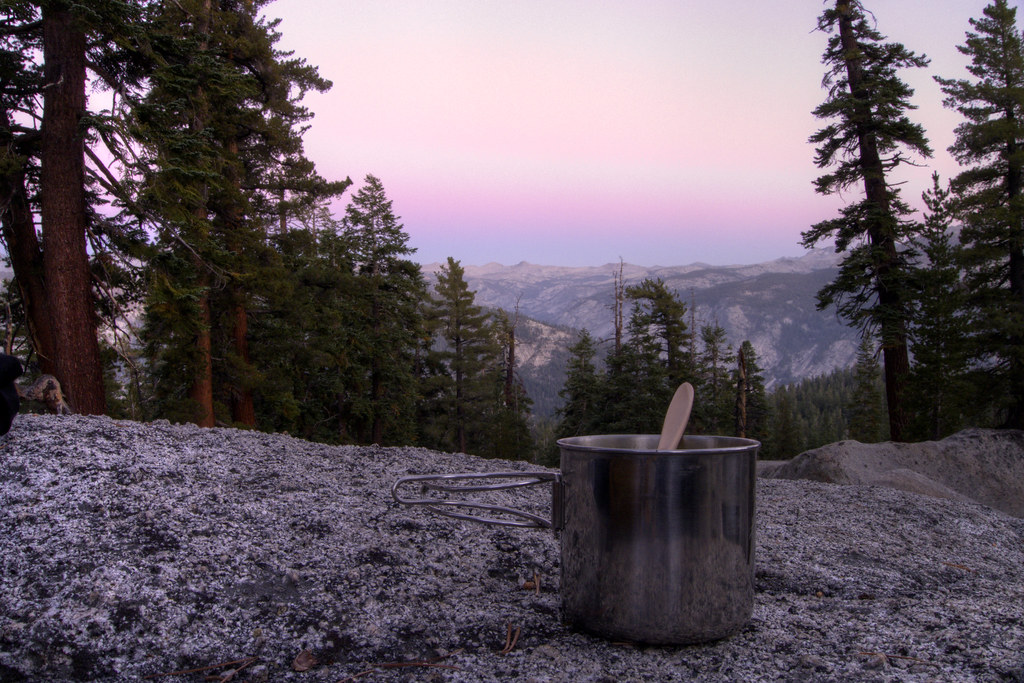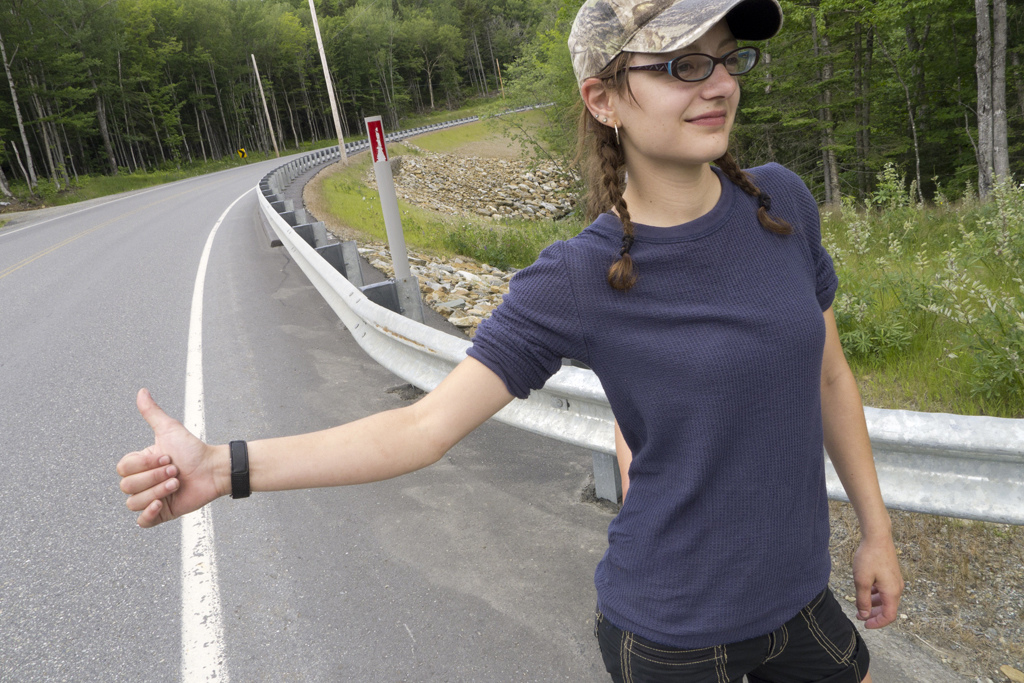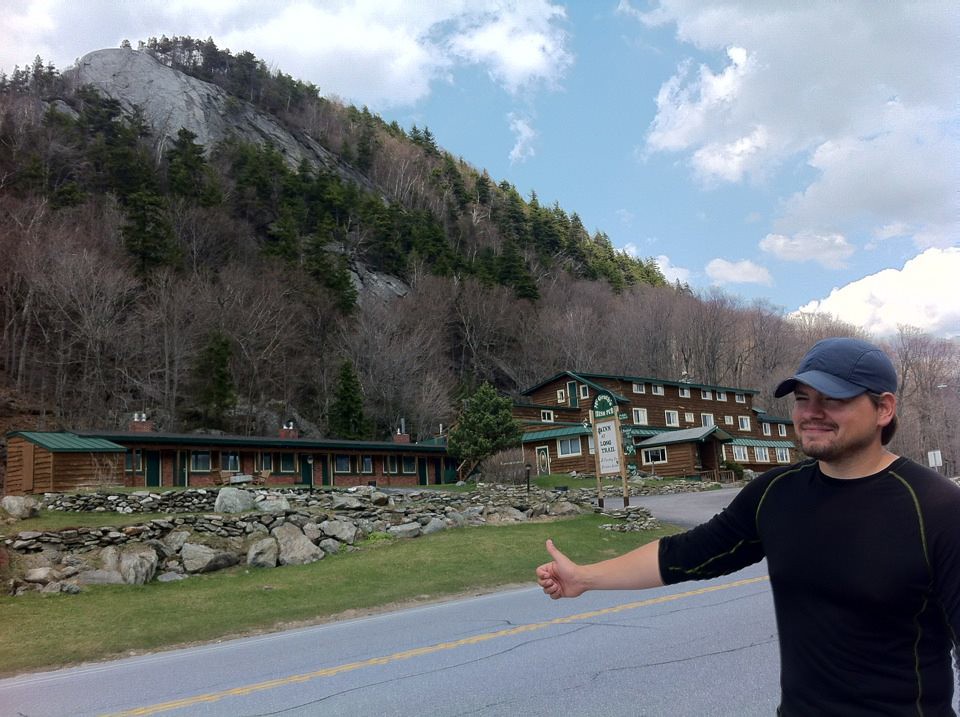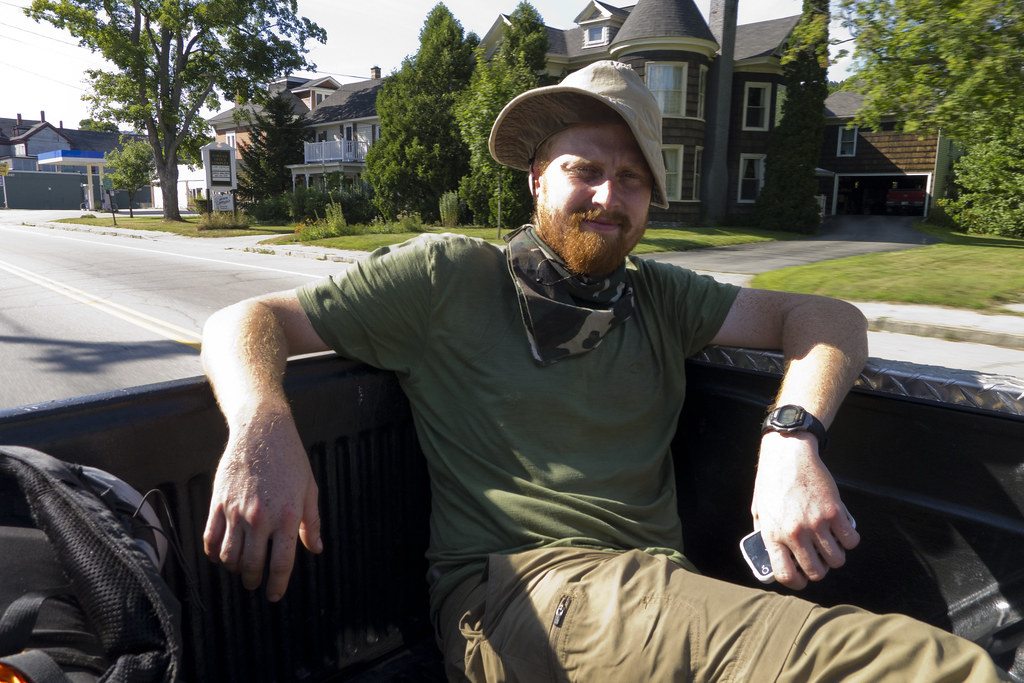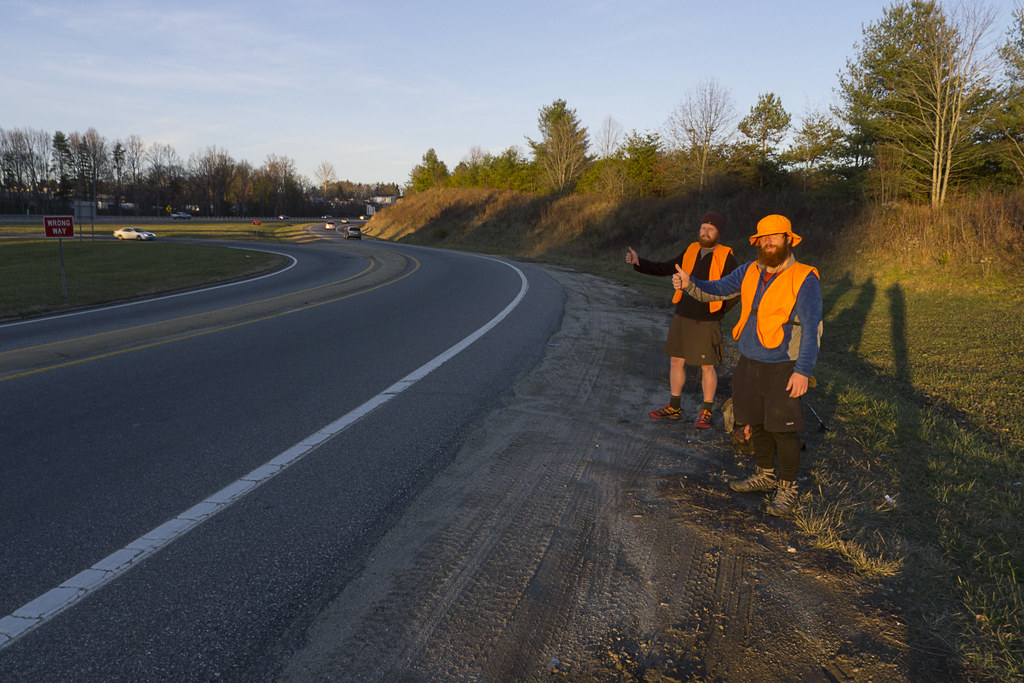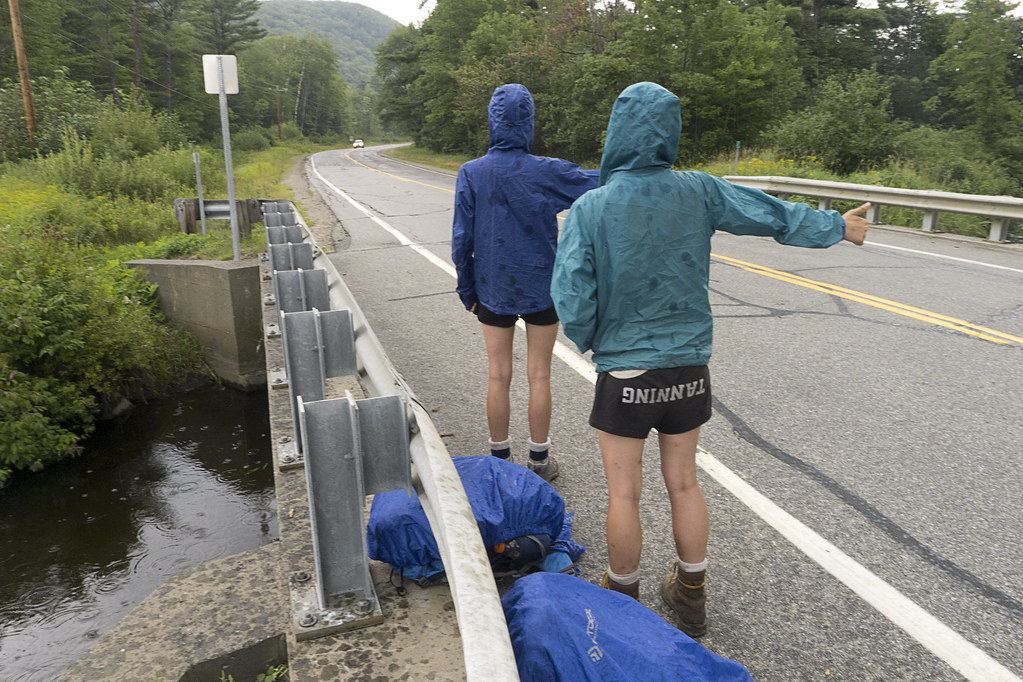A Thru-Hiker Shopping List
In part one, I wrote about the features of the best backpacking foods (calorie dense, easy to prepare, nutritious, non-perishable, appetizing, inexpensive, and versatile). Below are common items on my resupply shopping list that take all of that into account with more nutrition advice from New Orleans Saints sports dietitian, Tavis Piattoly.
Obviously, taste is too subjective to tell you specifically what to buy, so my goal instead is to give you new things to consider when buying food. It's inevitable that I will miss something, so please share your own suggestions in the comments below.
Peanut Butter
Cereal
Whey Protein
Related Articles:
Nutrition for Thru-hikers: An Interview with Sports Dietitian, Tavis Piattoly
Cooking Supplies and How to Make an Alcohol Stove
Grocery Shopping with a Thru-Hiker, Part One
Tavis Piattoly, MS, RD, LDN is the Sports Dietitian and Nutrition Consultant for the New Orleans Saints, New Orleans Hornets, and the Tulane University Athletic Department where he coordinates nutritional assessments, provides nutrition education, and develops individual meal plans for athletes to improve their health, performance, and recovery. In addition, he consults for numerous high schools athletic programs throughout the state of Louisiana. Futhermore, Tavis worked closely with Roy Jones Jr. and Bernard Hopkins to help them retain their boxing titles and has been working with Lance Berkman since 2011.
He is also the co-founder and Director of Sports Nutrition education for My Sports Dietitian (www.mysportsd.com), an online sports nutrition education company to help High School and College Athletes improve their eating habits to enhance performance, recovery, and health through the guidance of a Licensed Sports Dietitian.
Tavis obtained a Master’s of Science Degree in Exercise Physiology from Louisiana State University and a Bachelors of Science Degree in Nutrition and Dietetics from Louisiana State University. He is a registered and licensed Dietitian/Nutritionist. In addition, he serves on the Louisiana High School Athletic Association Sports Medicine Advisory Board.
In part one, I wrote about the features of the best backpacking foods (calorie dense, easy to prepare, nutritious, non-perishable, appetizing, inexpensive, and versatile). Below are common items on my resupply shopping list that take all of that into account with more nutrition advice from New Orleans Saints sports dietitian, Tavis Piattoly.
Obviously, taste is too subjective to tell you specifically what to buy, so my goal instead is to give you new things to consider when buying food. It's inevitable that I will miss something, so please share your own suggestions in the comments below.
Olive Oil
Oil is all fat, so it's the most calorie dense thing you can pack (about 242 calories per ounce). By adding olive oil to pasta, potatoes, rice, beans, etc, you can increase all of their calorie density. Instant potatoes, for example, have about 111 calories per ounce, but has 176 if you mix in two tablespoons of olive oil.
That brings up an important point: If you need 6,000 calories per day, and your meals average 110 calories per ounce (the average number of calories in freeze-dried pasta meals and instant potatoes), you'd need 3.5 pounds of food per day. If you instead carry meals that average 150 calories per ounce, you will reduce your food weight by 1 pound for every day's worth of food in your pack.
There are lots of oils to choose from, but olive oil has a nice buttery flavor, it's easy to find in resupply towns, and it's cheap (as low as US$0.99 per 1,000 calories), which brings up another important point: If you want to do a long distance hike on a budget, think of the cost of food per calorie, not the shelf price or the price per meal.
Another benefit to olive oil is that it's nearly 75% monounsaturated fatty acids, which is a healthy dietary fat. It also contains Omega-3 Fatty Acids, which help reduce joint and muscle inflammation.
One more thing, even if you can find the small plastic bottles of olive oil, I found that an empty soda bottle works better to prevent leaking.
Instant Potatoes
Instant mashed potatoes taste good and cook quickly, but nutritionally they're not great. Their glycemic index (GI) is higher than table sugar. I put them high on this list, however, to talk about blood sugar spikes from consuming a high GI diet.
In the morning, and during the day while hiking, high GI foods will provide you with an immediate source of energy, but pair that with fats, protein, and fiber:
"Adding fat or protein to any high glycemic carbohydrate source will blunt the spike in blood sugar," says Tavis Piattoly, MS, RD, LDN and Sports Dietitian and Nutrition Consultant for the New Orleans Saints. "I wouldn't recommend high GI foods while you are resting (before bed or during any period of inactivity) as your blood sugar could drop quickly and a hiker could experience fatigue. It would be best to have a meal mixed with protein, carbs, and fat to keep blood sugar in check."
For example, when eating a high GI food like instant potatoes, mix in olive oil and bacon bits to add fat and protein to help blunt the spike in blood sugar. Add a side like peanut butter on whole-wheat bread or tortilla for additional fiber, fat, and protein.
Nuts
Some of the best backpacking foods are nuts and seeds. Macadamia Nuts and Pecans pack about 200 calories per ounce. Most other nuts average about 185 and peanuts have about 150 calories per ounce (Peanuts are higher in protein, however, and considerably cheaper). Nuts are also versatile, since most are great mixed with oatmeal, trail mixes, or eaten plain.
My favorite are walnuts. They offer a good balance of calories and protein per ounce. They are not the best in those categories, but a good average in both. What really makes them my top choice are their high levels of Omega-3 fatty acids, which can reduce muscle and joint inflammation. No other nut has more.
Peanuts are my second choice for cost, taste, and protein per ounce, but eating a variety of nuts and seeds is always a better choice.
Here is a comparison of commonly available nuts in a variety of categories:
| Nut | Calories / oz | Protein / oz | Cost / 1000 cal. | Omega-3 |
| Walnuts | 189 | 4.72 | $2.99 | 2.50 g |
| Macadamia Nuts | 213 | 2.02 | $3.94 | 0 |
| Peanuts | 152 | 6.07 | $1.46 | 0 |
| Almonds | 172 |
6.07
| $1.83 | 0 |
| Pecans | 200 | 2.83 | $2.88 | 0.29 g |
| Cashews | 162 | 5.06 | $2.45 | 0 |
| Mixed Nuts | 172 | 6.07 | $1.95 | - |
Peanut Butter
My favorite backpacking food is peanut butter. It has a lot of calories per ounce (about 169), it keeps for a very long time, and it is one of the cheapest foods per calorie (as low as 88¢ per 1,000). It's also a great substitute for meat protein, which can be limited on the trail.
Perhaps the best thing about it as a backpacking food is its versatility. Slather some on a tortilla, bread, or crackers, make a peanut butter sauce for pasta (see recipes in part 3), add it to oatmeal to increase protein in your breakfast, or just eat a big spoonful with any meal or snack for extra fat, protein, and calories.
It’s tempting to buy powdered peanut butter (like PB2) to save weight, but it has almost 40% fewer calories per ounce, so it's actually heavier. It also costs nearly twice as much, is less nutritious, and in my opinion tastes absolutely terrible. It should be ashamed to call itself peanut butter.
Tortillas, Breads and Crackers
Unlike bread or crackers, whole wheat tortillas can take a lot of abuse when stowed in a backpack. Per calorie, however, tortillas cost about twice as much. Cheaper bread alternatives that can take more abuse are bagels, pita bread, and English muffins. (Campfire English muffin pizzas are amazing on the trail, by the way, more on that in part 3.)
If you want more calories per ounce, consider whole wheat Ritz crackers with your peanut butter, tuna, meats, or cheeses. They have twice as much as bread and tortillas.
Always go with whole wheat when possible to get all the fiber you can get:
"I typically recommend trying to get 10 g [of fiber] for every 1000 calories consumed," said Tavis. "The importance and benefits for a hiker would be to help regulate blood sugar and keep you full longer. The more stable your blood sugar and insulin levels are, the more energy you should have throughout the day. A more stable carbohydrate [from whole grains] will be better utilized as an energy source and keep you more full during a long day of activity."Whole Wheat Pasta
It’s tempting to go with cheap ramen noodles or Knorr Pasta Sides (and sometimes I still do), but with regular whole wheat pasta you can improve your diet without adding to your food budget. Unlike ramen noodles and many prepackaged pasta meals, whole wheat pasta is high in fiber and protein, it has a lower glycemic index, and it has no saturated fat. Diets high in saturated fat can lead to sluggishness and inflammation.
Whole Wheat Pasta is also versatile and, with only slightly more effort, you can make some meals every bit as good as a freeze-dried Mountain House meal, which will weigh less per calorie and at a fraction of the cost.
Save fuel by purchasing thinner pastas, like angel hair pasta or mini rotini, which cook much faster (al dente in about 4-7 minutes, 30-50% faster than regular spaghetti). Also, cooking it al dente, so it's still firm when bitten, has the added benefit of slowing digestion, which levels out the spike in blood sugar and makes you feel fuller longer.
My last pasta tip, you don't need a giant pot of boiling water to cook pasta. This of course wastes fuel and would be impractical in a small backpacker cook pot. Instead, fill your pot with enough water to cover the pasta and stir regularly, especially in the first minute or two when the sticky starches are at a high concentration on the surface of the pasta. Your pasta will cook just as well as if you had a large pot of boiling water and without clumping. After the pasta is finished boiling, save that starchy water to use in sauces to make them thicker and creamier.Cheeses
Unlike soft cheeses, hard block cheeses like Parmesan and Romano do not need to be refrigerated. They can last for several days if sealed and if temperatures do not exceed 85°F.
Other reasons to carry Parmesan is that it has 11 g of protein per ounce. That's more than nuts, peanut butter, powdered milk, and non-dehydrated meats. It can be added to prepackaged pasta dishes or used with whole wheat pasta and olive oil to make Parmesan Noodles.
Mac and CheeseSofter cheeses, when individually sealed, can keep for a few days if it isn't too hot. String cheese, in particular, packs well. On a warm day, keep cheese in the center of your pack to keep it cool.
Skip the box of Kraft Macaroni and cheese and make it from scratch using versatile ingredients that can be used in multiple ways. Just cook your pasta, add powdered whole milk, olive oil, and melt in shredded cheese or block cheese that has been shredded or cut into tiny pieces.
Another reason I suggest versatile ingredients such as these, is because the more ways you use them the larger quantities you can buy, which will save you money on a long distance hike.Oatmeal
Oatmeal also has a high glycemic index and instant oatmeal, although convenient, is loaded with additional sugar. Plain rolled oats are often less expensive per calorie and can be prepared in a number of healthier ways.
Reduce the overall glycemic index of the meal by adding nuts, peanut butter, whey protein, and/or powdered milk. You can also add a little olive oil or butter (if it's cold enough to carry butter) to increase the calories and improve flavor. Oatmeal can also be mixed with dried fruit or cocoa mixes such as Nestle or Ovaltine. It's great with a freshly chopped apple or fresh picked berries too.
In the photo of my oatmeal above, I added walnuts, peanut butter, blueberries,and protein powder for a 1,000 calorie breakfast with about 30g of protein 80g of carbs, and 35g of fat.Dried Fruit
Dried fruit is not calorie dense, but a variety of dried fruit will prevent some vitamin deficiencies on your thru-hike. Not only are they a convenient quick snack, but many dried fruits are great in oatmeal, trail mixes, and when used to sweeten certain rice and pasta dishes.
Tart cherries are particularly excellent on the trail, because they have been shown to reduce joint and muscle inflammation.Powdered Whole Milk
You can find powdered whole milk in the Hispanic section in most grocery stores, usually the Nestle Nido brand. Whole milk has 50% more calories (151 per ounce) than powdered skim milk and is usually a little bit cheaper per calorie.
Another reason many people, including myself, prefer whole milk is that it's creamier and tastes better in recipes, but both are a great way to add calories and protein to coffee, hot cocoa, oatmeal, and many other meals.
Cocoa drink mixes
Ovaltine with powdered milk will mix well hot or cold, which is why I stopped taking hot cocoa mix on the trail. It also tastes better to me than hot cocoa mix and is fortified with vitamins and minerals. It can also be added to oatmeal, coffee, or used in other trail recipes.Instant Coffee or Cider
Definitely not a necessity, but when it's cold I like to have hot beverages in my pack. It can do a lot for morale at the end of a long cold day.
For more protein and calories, mix instant coffee with cocoa and powdered milk to make a trail mocha. Add a little sugar to that, drink it cold, and it tastes similar to a Frappachino from Starbucks.
Breakfast cereals with powdered whole milk are like dehydrated foods that don’t require a stove, which is great when going stoveless or when you're unable or unwilling to cook. They are usually fortified with vitamins and minerals that hikers may become deficient in without taking a multi-vitamin.
The major drawback to cereals on the trail is they take up a lot of space in your pack. Many cereals also have a high glycemic index, so look for ones that are high in fiber and protein, such as Kashi Go Lean Cereal or shredded wheat. Dried or freshly picked fruit is a great addition.
Some cereals are also great in trail mixes and oatmeal. Cinnamon Toast Crunch, although not a healthy option, makes nearly all trail mixes better. Actually, it makes life better in general. Cereal is my comfort food.
Candy Bars
Candy bars are a cheap and convenient snack to carry and I'm always in the mood for them. Energy bars are generally higher in protein and lower in saturated fat, but they are 2-4 times more expensive and not as calorie dense. And I personally don't like the taste of most energy bars. Anyway, there are much cheaper ways to get that protein you need.
I'm a big fan of Snickers bars, but possibly the best candy bar for backpacking is Payday. It's about the same cost per calorie and has about the same calories per ounce as Snickers (134 calories per ounce), but Paydays have nearly 60% more protein and half as much saturated fat. They also don't melt on a hot day.
Peanut Butter M&Ms are also popular on the trail for their high calorie content (150 cals/oz.). They are lower in protein than Payday, however, and nearly three times as high in saturated fat. They are great in trail mixes though.Foil pouch of Chicken, Tuna, and Salmon
Salmon and Tuna costs about $21.00 per 1000 calories. What salmon and tuna do provide, however, is protein and omega-3 fatty acids.
Tuna is a decent protein source (7g/oz), but foil pouches of chicken have just as much at half the price ($10.20 per 1000 calories).
All of these only have about 30 calories per ounce, so I rarely buy more than one or two pouches on a resupply. Of course, if you have the time and it's legal in your area, fishing makes the weight and cost of fish irrelevant.Dehydrated and pre-cooked meats
Beef Jerky is more calorie and protein dense than tuna or chicken, with about 81 calories and 14 grams of protein per ounce. The price is comparable too, at $12.48 per 1000 calories or more.
Pepperoni is one of my favorite trail-suitable meat sources, due to its higher calorie density (132 calories/oz.) and its versatility. It's good on crackers, tortillas, trail pizzas, or eaten plain. It's also the cheapest meat suitable for the trail, if you buy a pound unsliced it can be as low as $2.63 per 1000 calories if you order it from Walmart.com. (I'll be testing out using Walmart.com for a few mail drops on the PCT, I'll let you know how that works out in a future post.) Grocery store pepperoni runs more like $4.60 per 1,000 calories, so still the cheapest meat on my list.
Another great meat option on the trail is pre-cooked bacon or bacon bits. They're great in instant mashed potatoes, salads, sandwiches, wraps, mac and cheese, and other pasta dishes. The "Fully-cooked" bacon has 126 calories per ounce and "real" bacon bits have 101, but bacon bits are half the price per ounce, at about $7.30 per 1000 calories.
If you like the taste, foil packs of Spam have 101 calories/oz., 12 g of protein/oz., and cost about $7.73 per 1,000 calories.Lentils and other beans
Lentils are not lightweight calories, at only 33 calories per ounce, but they make my list for a lot of reasons. They are the cheapest source of calories, protein, and fiber (as low as 26¢ per 1,000 calories).
They are 1/5th the cost per gram of protein of the next cheapest protein source on my list, whey protein powder. They are not a complete protein, however, but if eaten with whole grains you can create a more complete protein dish.
Other than being one of the best sources of fiber on this list, lentils are also full of many things thru-hikers may lack in their normal diet, such as, iron, folate, vitamin B1, and several essential amino acids.
Cook time can be reduced by soaking them in a zip-loc bag of water a few hours before cooking, but I haven't found this to be necessary unless I'm trying to conserve fuel. I tend to eat them al dente to reduce cook time as well.
It may seem expensive, and it is per calorie, but it's one of the cheapest, most versatile, and most convenient protein sources you can buy. It has over 24 grams of protein per ounce. Nothing else on my list even comes close. It's great in protein shakes, oatmeal, cereal, or hot cocoa.Fruits and Vegetables
A lot of produce, although heavy calories, will pack out well: potatoes, sweet potatoes, broccoli, onions, cucumbers, squash, garlic, apples, avocados, hot peppers, carrots, and celery, for example. Also, consider picking up a bag of complete ready-made salad for your first night's dinner after a resupply. Keep produce in the center of your pack where it is coolest.Pastries
Little Debbie snacks, honey buns, pop-tarts, and donuts may not be the healthiest food choices, but they can be cheap (pop-tarts as low as 88¢ per 1000 calories). They also require no time to prepare and are an excellent comfort food. I've said it before, but don't underestimate the power of comfort foods to improve morale on a long-distance hike.
And I'll repeat myself again, pair high GI foods like these with foods that are high in unsaturated fat, dietary fiber, and protein to blunt the blood-sugar spike. If you're going to eat them, have them with breakfast or during a mid-day snack break for their immediate source of energy, but not before bed or during periods of inactivity so you can avoid the subsequent drop in blood sugar.Spices and sauce packets
Soy Sauce, hot sauce, mustard, honey, sugar, salt, pepper, and other restaurant condiment packets are a great way to improve recipes without carrying large quantities. I pick up a few when I'm eating in restaurants in town. You can also purchase single use sized portions of spices in many grocery stores.
Drink Mixes/Electrolyte replacement
Drink mixes with electrolytes are vital when getting this much physical activity, especially on a hot summer day climbing up mountains. Drink mixes will also make creek or lake water taste better, which helps ensure you'll drink enough. Electrolyte replacement is important enough to consider it part of your first aid kit.
Once again, thanks to Tavis Piattoly for helping me get some of my facts straight in this article. In an upcoming post, I'll use this list in a sample daily meal plan including recipes from the authors of the best-selling backpacking cookbook, "Lip Smackin' Backpacking." Please send me an email with your own recipes, comments, or suggestions, or leave them in the comments below.
Thanks for reading
-RG
Thanks for reading
-RG
Nutrition for Thru-hikers: An Interview with Sports Dietitian, Tavis Piattoly
Cooking Supplies and How to Make an Alcohol Stove
Grocery Shopping with a Thru-Hiker, Part One
- - - = = = - - -
Tavis Piattoly, MS, RD, LDN is the Sports Dietitian and Nutrition Consultant for the New Orleans Saints, New Orleans Hornets, and the Tulane University Athletic Department where he coordinates nutritional assessments, provides nutrition education, and develops individual meal plans for athletes to improve their health, performance, and recovery. In addition, he consults for numerous high schools athletic programs throughout the state of Louisiana. Futhermore, Tavis worked closely with Roy Jones Jr. and Bernard Hopkins to help them retain their boxing titles and has been working with Lance Berkman since 2011.
He is also the co-founder and Director of Sports Nutrition education for My Sports Dietitian (www.mysportsd.com), an online sports nutrition education company to help High School and College Athletes improve their eating habits to enhance performance, recovery, and health through the guidance of a Licensed Sports Dietitian.
Tavis obtained a Master’s of Science Degree in Exercise Physiology from Louisiana State University and a Bachelors of Science Degree in Nutrition and Dietetics from Louisiana State University. He is a registered and licensed Dietitian/Nutritionist. In addition, he serves on the Louisiana High School Athletic Association Sports Medicine Advisory Board.



